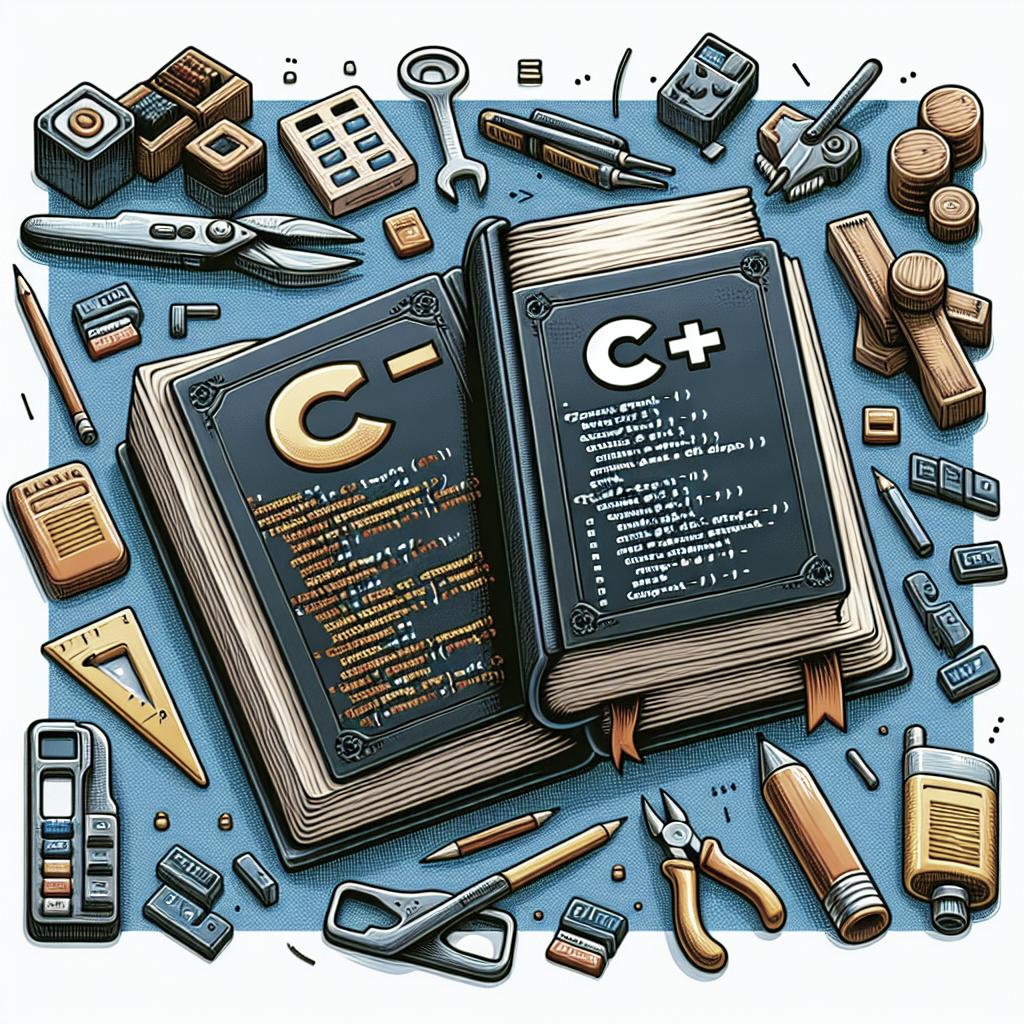html
Understanding Abstraction in OOP: A Comprehensive Guide
In the world of object-oriented programming (OOP), abstraction is a fundamental concept that often leaves developers puzzled. At its core, abstraction allows programmers to reduce complexity by hiding unnecessary details in their code. This article delves into the essential aspects of abstraction, including abstract classes, methods, and interfaces, alongside discussing their advantages and potential disadvantages. We also explore when and how to implement abstraction strategically in Java. Through this detailed guide, you will gain clarity on abstraction’s multifaceted nature and its practical applications, ultimately enhancing your coding efficiency and understanding.
Abstract Classes and Abstract Methods
Abstract classes and methods are pivotal in establishing a high level of abstraction in object-oriented programming. An abstract class serves as a blueprint for other classes, providing a foundation upon which specific implementations are made. These classes cannot be instantiated on their own and often contain one or more abstract methods without a body, serving as a placeholder for the subclasses to impose specific behavior.
Abstract methods are defined within an abstract class and lack an implementation. These methods force any subclass inheriting the abstract class to provide a method implementation, ensuring that the abstract class’s core purpose is preserved while allowing flexibility in subclass behavior. This powerful mechanism prevents the misuse of objects and promotes a cleaner, more intuitive code structure.
Algorithm to Implement Abstraction
Implementing abstraction in OOP involves a strategic approach to utilize abstract classes, methods, and interfaces effectively. The initial step requires identifying shared attributes and behaviors across different classes that can be abstracted. This process essentially distills common functionalities into a base class, streamlining the subsequent design process.
Once the abstraction is defined, the implementation focus shifts to defining the concrete subclasses. These subclasses should inherit from the abstract class and provide specific behaviors as described by the abstract methods. This not only enforces a consistent framework but also ensures flexibility and adaptability in the application’s architecture, accommodating future enhancements or changes with ease.
When to Use Abstract Classes and Abstract Methods?
Choosing to utilize abstract classes and methods hinges on the dynamic requirements of your application. Abstraction should be used when a common interface or a set of shared behaviors among classes are needed but where specific implementations differ. This approach benefits instances where code reusability and management of complex systems are priorities.
Additionally, abstract classes are beneficial when creating a controlled environment, as they allow you to define default behavior while forcing related subclasses to adhere to a particular design pattern. This not only reduces errors that may arise from inconsistent implementations but also promotes an organized and maintainable codebase, particularly in collaborations involving various developers.
Interface
Interfaces take the abstraction concept a step further by allowing complete behavioral abstraction without any implementation. Unlike abstract classes, which may include both complete and abstract methods, interfaces only provide abstract method declarations that the implementing class must fulfill. This ensures high flexibility and fine-grained control in code design, especially important in Java, where multiple inheritance is managed through interfaces.
Using interfaces allows you to define contracts for what a class can do without specifying how it should do it. This encourages a plug-and-play module system where classes can dynamically interconnect, improving code scalability and adaptability. It is especially beneficial in large software projects or APIs where diverse components need to interact seamlessly.
Advantages of Abstraction
The primary advantage of abstraction is the reduction of complexity. By focusing on essential characteristics, programmers can create more robust and understandable code structures. Abstraction leads to improved data hiding and data management, enhancing both readability and maintainability of the code.
Moreover, abstraction encourages the reuse of existing code, promoting efficient use of resources and reducing development time. It provides the flexibility needed to evolve codebases over time, allowing new functionality to be integrated without needing significant rewrites, which is crucial for businesses aiming for quick adaptation to changing requirements.
Disadvantages of Abstraction
Despite its numerous advantages, abstraction also comes with its drawbacks. One significant downside is the potential increase in complexity during the design phase, where identifying the appropriate level of abstraction can be challenging. This often requires a deep understanding of the application domain to implement effectively.
Additionally, if not carefully managed, abstraction can lead to over-engineering. Developers may create overly complex hierarchies that are difficult to manage and understand, resulting in a cumbersome and inflexible codebase. Ensuring a balanced level of abstraction is crucial to leveraging its benefits while minimizing potential pitfalls.
FAQs
Why do we use abstract?
Abstract constructs are used to hide complex realities by providing simplified and essential representations within a program. This not only facilitates cleaner code but also enables enforceable method structures across diverse classes, promoting consistent and reusable object-oriented designs.
What is the Difference between Encapsulation and Data Abstraction?
Encapsulation is about bundling the data and methods that work on the data within one unit, often termed a class, and restricting access to certain components. In contrast, data abstraction is focused on revealing only the essential features of an object, hiding the underlying complexity.
What is a real-life example of data abstraction?
A common real-life example is a vehicle’s steering system. Drivers operate a steering wheel to navigate, which abstracts the complexity of the vehicle’s steering mechanisms and controls. The driver need not understand the underlying systems to effectively use the steering wheel, much like how users interact with software interfaces without needing to understand the underlying code.
What is the Difference between Abstract Classes and Interfaces in Java?
Abstract classes in Java can host both abstract and non-abstract methods with defined behaviors, supporting inheritance hierarchies. Interfaces, by contrast, define only abstract methods and constants, facilitating multiple inheritance patterns by enabling classes to implement multiple interfaces concurrently.
Similar Reads
- Java Overview
- Java Basics
- Java Flow Control
- Java Methods
- Java Arrays
- Java Strings
- Java OOPs Concepts
- Java Interfaces
- Java Collections
Lessons Learned
| Concept | Description |
|---|---|
| Abstract Classes & Methods | Blueprints for other classes providing foundation and partial implementations. |
| Algorithm for Abstraction | Strategically simplistic design focusing on shared attributes and behaviors. |
| When to Use Abstraction | Applicable when common interface or shared behaviors are required. |
| Interface | Defines full behavioral abstraction for implementing classes. |
| Advantages | Reduces complexity, enhances code reuse, and improves maintainability. |
| Disadvantages | Challenges in design phase and risk of over-engineering. |
This blog post provides a detailed exploration of the concept of abstraction within the realm of Object-Oriented Programming (OOP), focusing particularly on Java. The post is structured with descriptive subheadings for clarity and ease of navigation and includes comprehensive paragraphs under each heading to explore various aspects of abstraction. The article concludes with an HTML table summarizing the key takeaways, providing readers with a concise overview of the discussed concepts.


